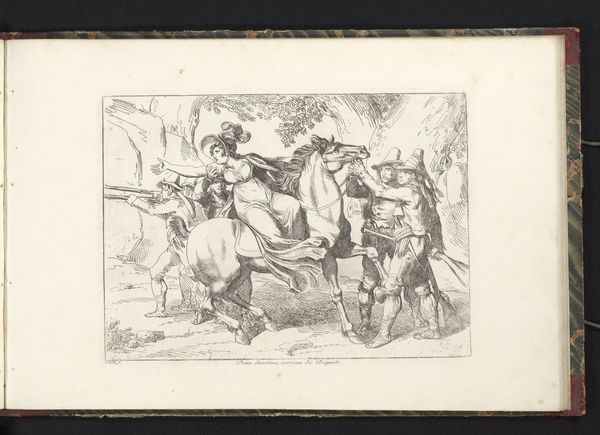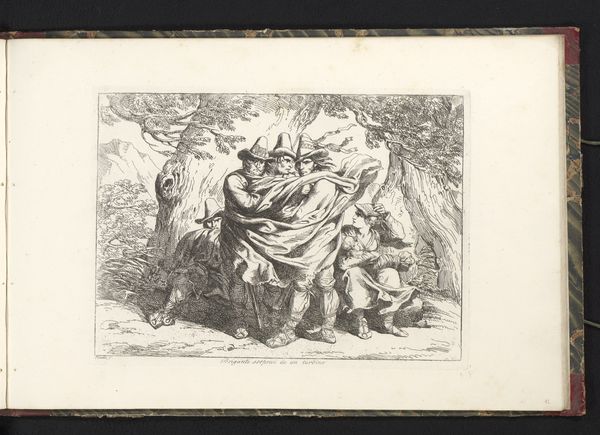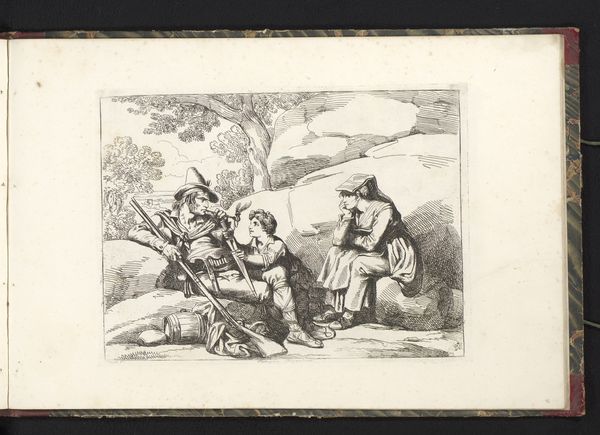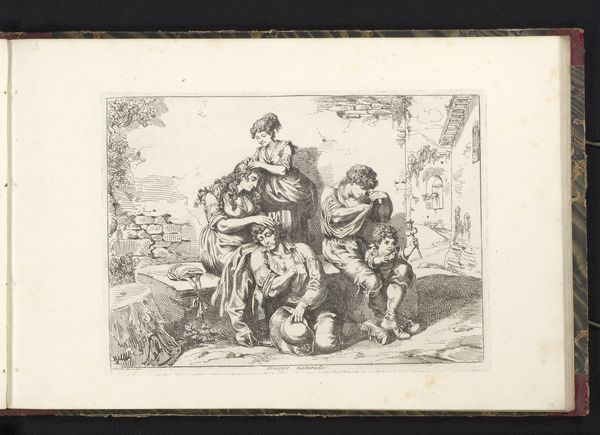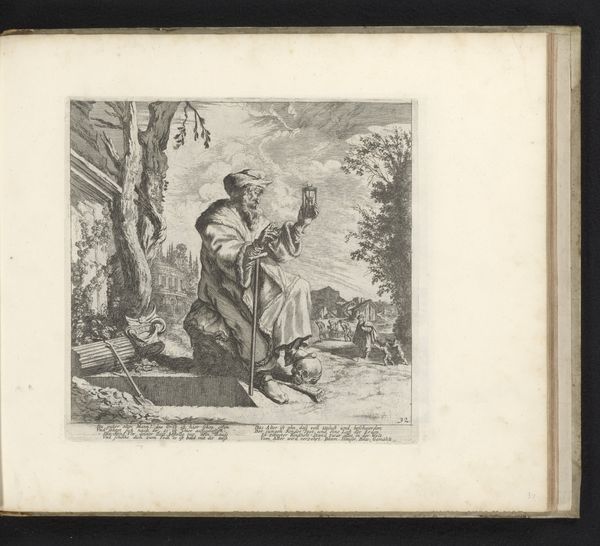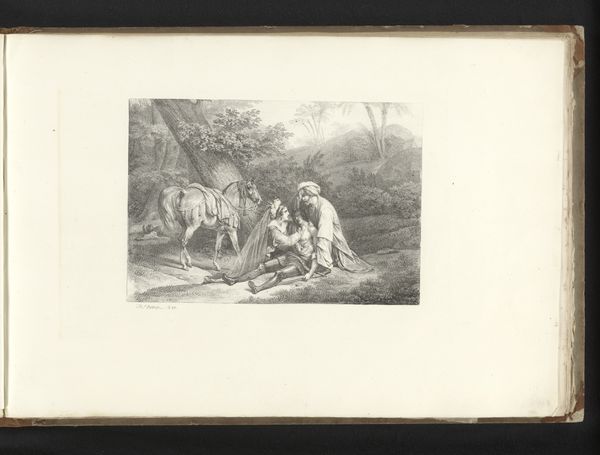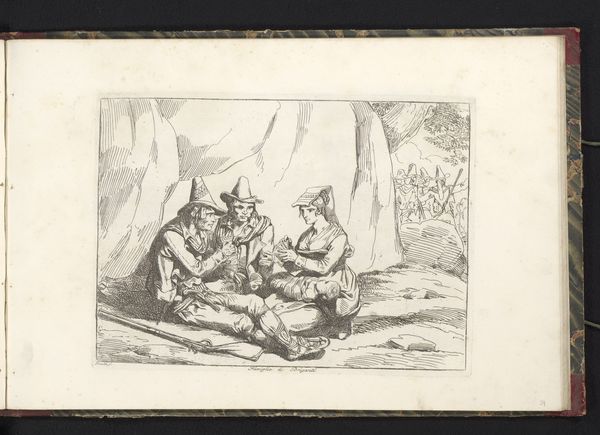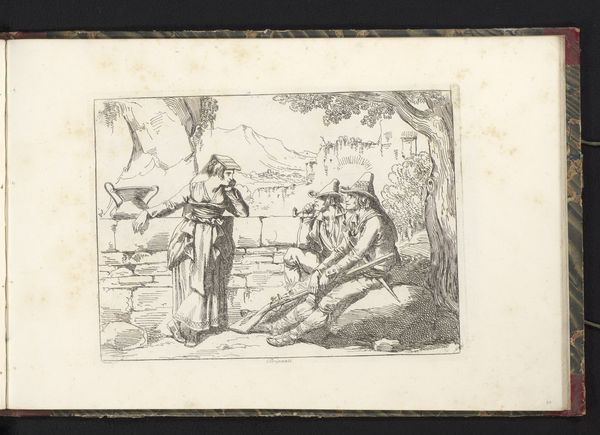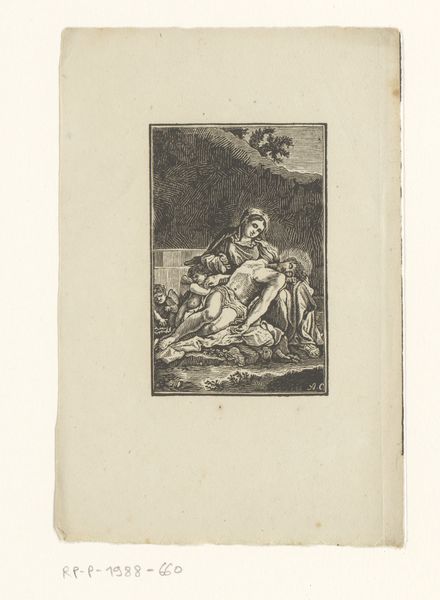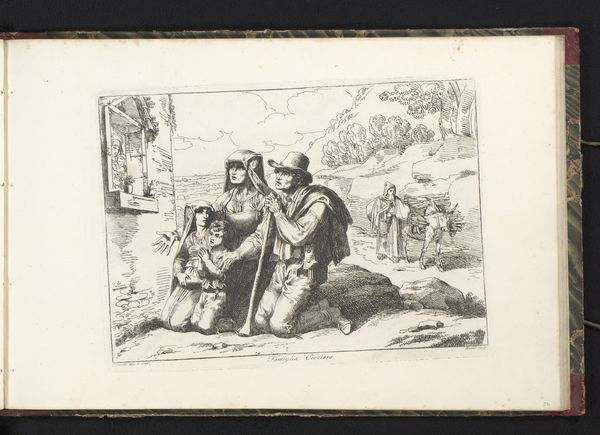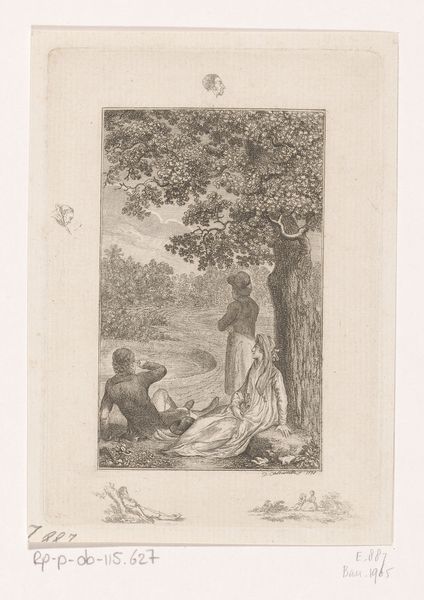
print, engraving
#
narrative-art
# print
#
landscape
#
figuration
#
romanticism
#
pen-ink sketch
#
engraving
Dimensions: height 200 mm, width 276 mm
Copyright: Rijks Museum: Open Domain
Curator: Today, we're looking at Bartolomeo Pinelli's "Resting Bandits," an engraving likely created between 1819 and 1823. It’s a strikingly simple yet evocative composition. Editor: Indeed. My immediate impression is one of stillness. The use of line creates a hushed atmosphere; the eye moves gently over the composition. The light, the balance, the calm of the resting subjects; its affect exudes peace. Curator: That stillness, I think, masks the complex social tensions of the era. Pinelli was fascinated by the bandit figure – a trope in Italian Romanticism. We can consider how his portrayal challenges and perpetuates stereotypes of marginal groups in Italian society and how socio-political context of brigands in Italy may impact the art and society. Editor: I see your point, but the beauty in the work is how these figures have been distilled into forms of shade, shapes, tone and light. Note the dense hatching to suggest volume and shade under the canopy and behind the figures. The medium perfectly serves the function; etching and engraving allowed the propagation of an aesthetic sentiment. Curator: But surely we can consider, beyond technique, the identity of these "bandits." How does Pinelli position them in relation to the concept of Italian nationhood that was gaining momentum at the time? Were they romantic rebels, or dangerous outcasts? Their clothing seems intentionally vague, contributing to a broader romantic narrative. Editor: Vague perhaps in specific historical terms, but very precise as to composition. Consider how Pinelli uses contrasting diagonal lines. The placement creates a stable pyramid that offers a balanced effect, the foliage mirroring, with gentle organic effect, the rigidity of the spears or rifles they carry with them. Curator: So, when we examine the symbolic and narrative power, we also need to question the idealization of violence inherent in the "bandit" archetype and how it speaks to broader cultural anxieties. The romantic ideal overshadows the socio-economic reality that created these figures. Editor: Perhaps. But, through aesthetic experience of proportion, contrast and harmony we grasp that reality of existence itself in this artwork. Ultimately the eye is led from element to element in aesthetic appreciation. Curator: By acknowledging these tensions and inviting discussion, we enrich our understanding of Italian Romanticism. The aesthetic form invites a deeper appreciation that moves beyond formal composition and historical interpretations. Editor: And my perspective is that the emotional depth comes from the visual poetry. Only then can we perhaps more meaningfully impose any external theory on it. It is a rewarding print that demands slow and attentive observation.
Comments
No comments
Be the first to comment and join the conversation on the ultimate creative platform.


